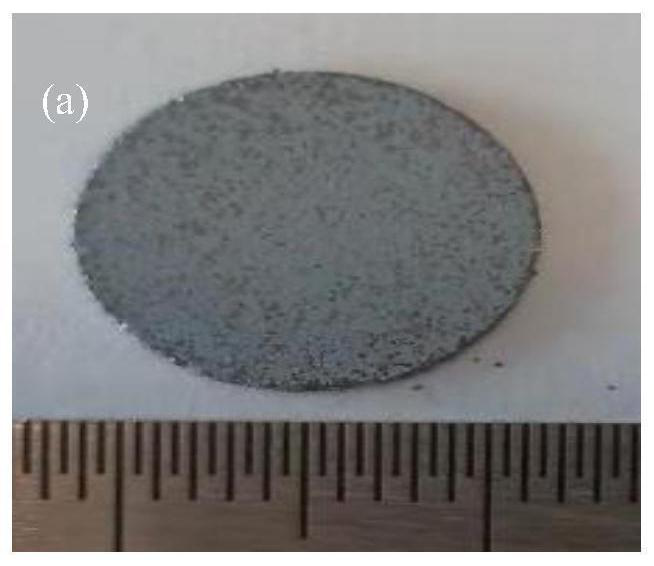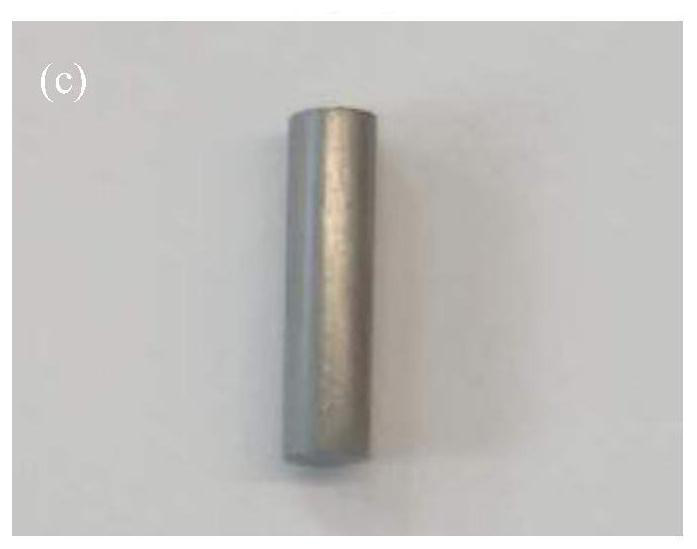A kind of aluminum-silicon alloy graphite composite heat-conducting material and its preparation and application
A technology of composite thermal conductive material and aluminum-silicon alloy, which is applied in the field of thermal management materials, can solve the problems of unsmooth development of aluminum-based graphite composite materials, difficulty in composite forming of aluminum matrix and graphite sheet, damage to thermal conductivity and strength of composite materials, etc. It is beneficial to the promotion of large-scale industrialization, shortening the preparation time, and improving the fluidity.
- Summary
- Abstract
- Description
- Claims
- Application Information
AI Technical Summary
Problems solved by technology
Method used
Image
Examples
Embodiment 1
[0049] This embodiment provides an aluminum-silicon alloy graphite composite heat-conducting material, which is made of dried aluminum-silicon alloy powder base material (aluminum-silicon alloy powder produced by Hunan Ningxiang Jiweixin Metal Powder Material Co., Ltd., with a particle size of 2 -8μm, nearly spherical shape) and dried graphite flake reinforcement (Graphite Flakes, abbreviated as GF, which is the high-purity flake graphite No. XF050 produced by Jiangsu Nanjing Xianfeng Nano Material Technology Co., Ltd., the mesh number is 80 mesh, purity is 99.9wt%) after mixing uniformly in the glass;
[0050] The obtained mixture is compacted in a graphite mold, and then prepared by hot pressing and sintering under vacuum conditions. The aluminum-silicon alloy graphite composite heat-conducting material prepared in this example is recorded as material 1#, and in material 1# , flake graphite is evenly distributed in the base material aluminum-silicon alloy powder Al-20% Si, a...
Embodiment 2
[0056] This embodiment provides an aluminum-silicon alloy graphite composite heat-conducting material, which is after mixing aluminum-silicon alloy powder Al-20% Si (same as Example 1) with flake graphite sheet (same as Example 1), and then mixing the obtained mixture Compacted in a graphite mold, and then prepared after hot pressing and sintering under vacuum conditions, wherein, the vacuum hot press used in the hot pressing and sintering process of this embodiment and the graphite mold are the same as in Example 1;
[0057] The aluminum-silicon alloy graphite composite heat-conducting material prepared in this example is recorded as material 2#. In material 2#, flake graphite is evenly distributed in the base material aluminum-silicon alloy powder Al-20% Si, and no bridging phenomenon occurs;
[0058] Wherein, based on the total weight of the mixture as 100%, the content of the graphite flakes is 15 wt%, and the content of the aluminum-silicon alloy powder Al-20% Si is 85 wt%...
Embodiment 3
[0061] This embodiment provides an aluminum-silicon alloy graphite composite heat-conducting material, which is after mixing aluminum-silicon alloy powder Al-20% Si (same as Example 1) with flake graphite sheet (same as Example 1), and then mixing the obtained mixture Compacted in a graphite mold, and then prepared after hot pressing and sintering under vacuum conditions, wherein, the vacuum hot press used in the hot pressing and sintering process of this embodiment and the graphite mold are the same as in Example 1;
[0062] The aluminum-silicon alloy graphite composite heat-conducting material prepared in this example is recorded as material 3#. In material 3#, flake graphite is evenly distributed in the base material aluminum-silicon alloy powder Al-20% Si, and no bridging phenomenon occurs;
[0063] Wherein, based on the total weight of the mixture as 100%, the content of the graphite flakes is 15 wt%, and the content of the aluminum-silicon alloy powder Al-20% Si is 85 wt%...
PUM
| Property | Measurement | Unit |
|---|---|---|
| density | aaaaa | aaaaa |
| bending strength | aaaaa | aaaaa |
| density | aaaaa | aaaaa |
Abstract
Description
Claims
Application Information
 Login to View More
Login to View More - R&D
- Intellectual Property
- Life Sciences
- Materials
- Tech Scout
- Unparalleled Data Quality
- Higher Quality Content
- 60% Fewer Hallucinations
Browse by: Latest US Patents, China's latest patents, Technical Efficacy Thesaurus, Application Domain, Technology Topic, Popular Technical Reports.
© 2025 PatSnap. All rights reserved.Legal|Privacy policy|Modern Slavery Act Transparency Statement|Sitemap|About US| Contact US: help@patsnap.com



